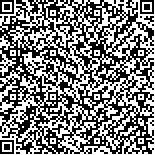本文已被:浏览 1254次 下载 2449次
Received:March 02, 2017 Revised:March 20, 2017
Received:March 02, 2017 Revised:March 20, 2017
中文摘要: 研究了随机建模技术在锂电池剩余使用寿命预测中应用.基于此,使用Box-Jenkins ARIMA模型模拟锂电池退化过程.在NASA PCoE获取锂电池测量数据集,采用ADF单根检验与差分法对锂电池容量原始数据平稳化处理.结合自相关函数与偏自相关函数进行参数估计,构建多个ARIMA模型,并通过评估各种估计参数验证各个模型的有效性,根据AIC、SC准则与正态化BIC选择最佳预测模型.在对所选模型进行严格评估之后,ARIMA (2,1,2)被识别为最佳拟合模型.使用ARIMA模型获得了比较精确的预测结果,结果表明ARIMA模型预测锂电池剩余使用寿命短期内具有较高的精确度和较强的可行性.
Abstract:The present study focuses on the application of stochastic modeling technique in analyzing the remaining useful life prediction of lithium battery. For this, the Box-Jenkins ARIMA model has been used for simulating the lithium battery degradation process. The lithium battery dataset has been collected from NASA PCoE. ADF unit root test and difference method are used to smooth the original data of lithium battery capacity. The parameters are estimated by analyzing autocorrelation function and partial autocorrelation function. Several ARIMA models have been generated and their validation has been verified by assessing various estimation parameters. According to AIC, SC criteria and normalized BIC, the optimal prediction model is selected. After rigorous evaluation of the selected models, the ARIMA(2,1,2)is indentified as the best fit model. Satisfactory results have been obtained with the selected ARIMA models, indicating that the ARIMA model is highly accurate and feasible in the short term.
keywords: ARIMA remaining useful life prediction ADF
文章编号: 中图分类号: 文献标志码:
基金项目:“高档数控机床与基础制造装备”科技重大专项(F14-056-7-00)
引用文本:
陶耀东,李宁.基于ARIMA模型的工业锂电池剩余使用寿命预测.计算机系统应用,2017,26(11):282-287
TAO Yao-Dong,LI Ning.Industrial Lithium Battery Remaining Useful Life Prediction Based on the ARIMA Model.COMPUTER SYSTEMS APPLICATIONS,2017,26(11):282-287
陶耀东,李宁.基于ARIMA模型的工业锂电池剩余使用寿命预测.计算机系统应用,2017,26(11):282-287
TAO Yao-Dong,LI Ning.Industrial Lithium Battery Remaining Useful Life Prediction Based on the ARIMA Model.COMPUTER SYSTEMS APPLICATIONS,2017,26(11):282-287


